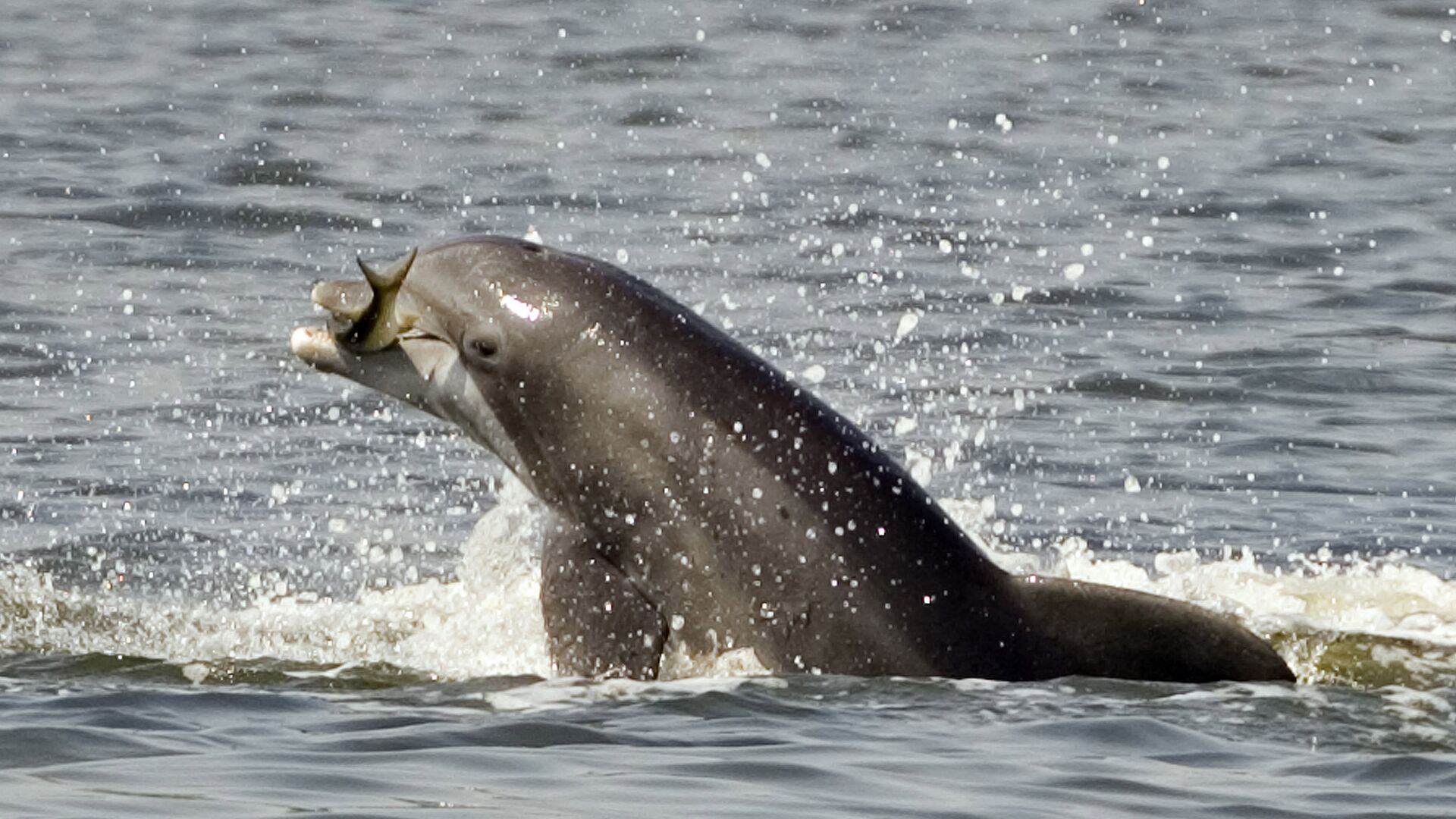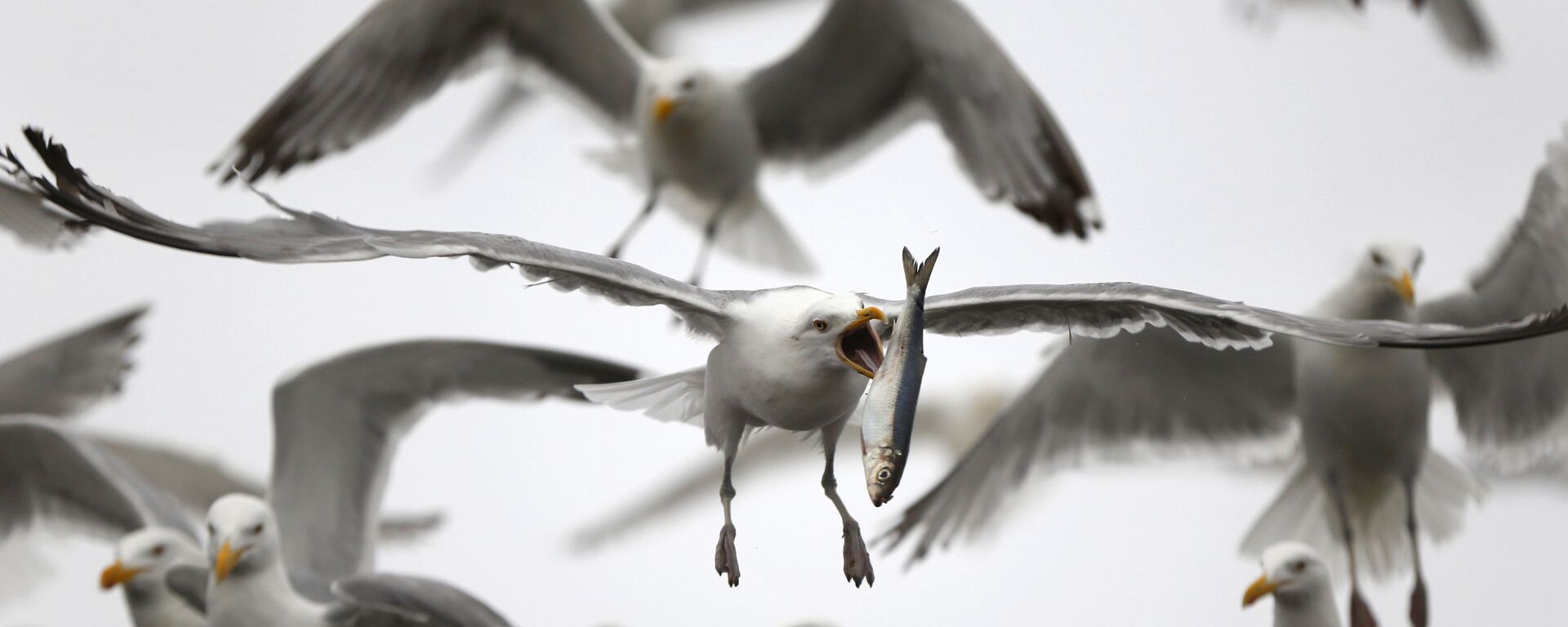Swedish Researchers Sound The Alarm as World's First Case Of Bird Flu In A Porpoise Is Confirmed

© AP Photo / Phil Sandlin, File
Subscribe
The unique case comes in the wake of a massive outbreak of bird flu that hit Scandinavia and other parts of Europe, leaving coastlines strewn with hundreds of thousands of dead seabirds. Environmental watchdogs have described the situation as a “disaster” and are warning of dire consequences for both wildlife and domestic fowl.
The Swedish National Veterinary Institute (SVA) has confirmed what appears to be the world's first case of the bird flu virus in a porpoise.
The medical analysis indicated that the porpoise died as a result of the same virus that was behind this summer's extensive bird flu outbreak among wild birds and waterfowl.
The young male porpoise was stranded alive in Kämpersvik in the north of Västra Götaland county, earlier this summer. Despite repeated attempts by private individuals to return it to deeper water, it seemed to be too exhausted, got entangled in seaweed, and died later the same evening. The porpoise was subsequently transported to the SVA for an autopsy.
The analysis found the bird flu virus in several internal organs, which had caused brain inflammation and meningitis. The findings also confirmed that the bird flu virus was the cause of death.
“As far as we know, this is the first confirmed case in the world of bird flu in a porpoise. Unlike seals, in which outbreaks caused by influenza viruses are frequently observed, there are only isolated reports of influenza viruses in cetaceans. It is likely that the porpoise somehow came into contact with infected birds,” Elina Thorsson, a wild-animal veterinarian at the SVA, said in a statement.
The young male porpoise was stranded alive in Kämpersvik in the north of Västra Götaland county, earlier this summer. Despite repeated attempts by private individuals to return it to deeper water, it seemed to be too exhausted, got entangled in seaweed, and died later the same evening. The porpoise was subsequently transported to the SVA for an autopsy.
The analysis found the bird flu virus in several internal organs, which had caused brain inflammation and meningitis. The findings also confirmed that the bird flu virus was the cause of death.
“As far as we know, this is the first confirmed case in the world of bird flu in a porpoise. Unlike seals, in which outbreaks caused by influenza viruses are frequently observed, there are only isolated reports of influenza viruses in cetaceans. It is likely that the porpoise somehow came into contact with infected birds,” Elina Thorsson, a wild-animal veterinarian at the SVA, said in a statement.
Researchers are particularly concerned that the virus had “oversummered”. Virus outbreaks of this type usually occur during the winter months and then subside in summer.
“What we are seeing, with continued spread of infection and high morbidity and mortality among wild birds over the summer, is a completely new scenario. There are therefore many indications that the coming season will also be problematic, with an increased risk of outbreaks also in domestic birds,” SVA zoologist Karl Ståhl told national broadcaster SVT.
The virus in question, H5N1, has already caused an extensive bird-flu outbreak that still affectsd wild birds in Sweden and in other parts of Europe and North America. How the porpoise from Kämpersvik became infected is still unknown, but it was found at the same time as bird flu was causing record-high mortality among seabirds, especially gannets and geese, along the country's coastline which became strewn with thousands of carcasses, to the point that environmental watchdogs were calling the situation a “disaster”. Bird flu attacks the brain and the central nervous system, causing severe inflammation and loss of control.
Porpoises are a group of fully aquatic marine mammals ranking among the smallest of toothed whales. They are closely related to narwhals and belugas, yet are most similar in appearance to dolphins. They are distinguished by flattened, spade-shaped teeth (as opposed to conical in dolphins) and the lack of a pronounced beak.


